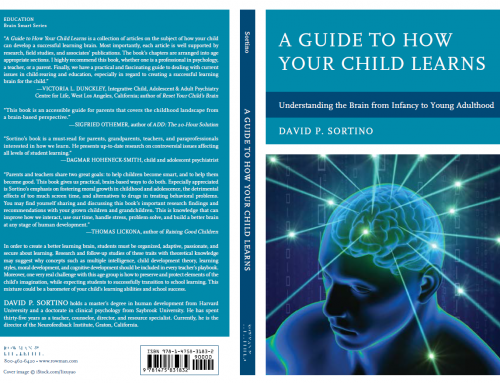Every child and/or adolescent should have the opportunity to create a “success identity.” It is particularly important during the 7 to 11 year old stage of development as described by Harvard social psychologist, Erik Erikson, as “Industry versus Inferiority.” At this stage children need to create, to be industrious and experience success in any form and/or activity. If not, according to Erickson, they begin experiencing a sense of “inferiority” which can affect a child’s learning potential as well as intelligence. Moreover, children need to experience a sense of “industry,” because looming on the horizon is the next critical stage of development called adolescence or Erikson’s stage called “Identity versus Role Confusion.” A child experiencing a lack of industry or (success) experiences, begins to develop the opposite sense of self, one of “inferiority,” be it emotionally, intellectually, socially etc. Further, a sense of “inferiority” is especially worrisome if the child takes this inferior perception of his/her abilities or skills into adolescence. In its most negative form “role confusion” develops which is the problem for school dropouts who demonstrate attraction to drugs, oppositional behavior toward rules and laws of society and family.
The first step for the creation of a “success identity” should be a series of assessments that will define not only your child/adolescent’s academic skills but also multiple and vocational intelligences. Adolescents caught in a state of “role confusion” must find a positive identity because Erikson’s next stage (adult) is called “intimacy versus isolation.” Adults who fail to experience a sense of intimacy with family, job, and community etc. assume a sense of isolation and could become those individuals who fail to connect (intimacy) with the aforementioned support groups. Our prisons and our divorce courts are filled with such individuals.
The first assessment should measure math, written language, and reading skills etc. It is imperative that the child/adolescent has the basic skills to succeed in the world. In other words, weak reading and math skills could become weights that could contribute to a perception of inferiority and role confusion and could lead to a sense of “isolation?” The second assessment, multiple intelligence, should measure the child’s preferred intelligences. Our schools/society is dominated by a left-brain, verbal and logical curriculum. For example, a child whose preferred intelligence is visual sees the world more abstractly, rather than in the linear/sequential mode and could experience a sense of “inferiority and/or “role confusion” during the critical school years of skill and academic development. The third assessment should test the child’s vocational intelligence. This assessment allows the professional to attach a particular personality with the child’s/adolescent’s vocational interests. As a high school freshman, Bill Gates nurtured his vocational interests in computers; Steven Spielberg nurtured his film making vocation by making family films at age six!
The second step should be for parents to read Malcolm Galdwell’s The Outliers. The book describes what Gladwell calls his 10,000-hour rule. The Mozart’s and the Gates of the world started on their 10,000-success identity early in life and invested countless of hours to reach the pinnacle of success.
The final step should be a consultation with parents and child/adolescent describing his/her academic strengths and weaknesses, as well as an identification of preferred multiple and vocational intelligences. A consultation should be supported by a lengthy report detailing how the assessment results should be used to create his/her personal “success identity.”
Dr. David Sortino is a psychologist and currently Director of Educational Strategies, a private consulting company catering to teachers, parents, and students. Dr. Sortino can be reached at davidsortino@comcast.net. For additional articles go to davidsortino.com


